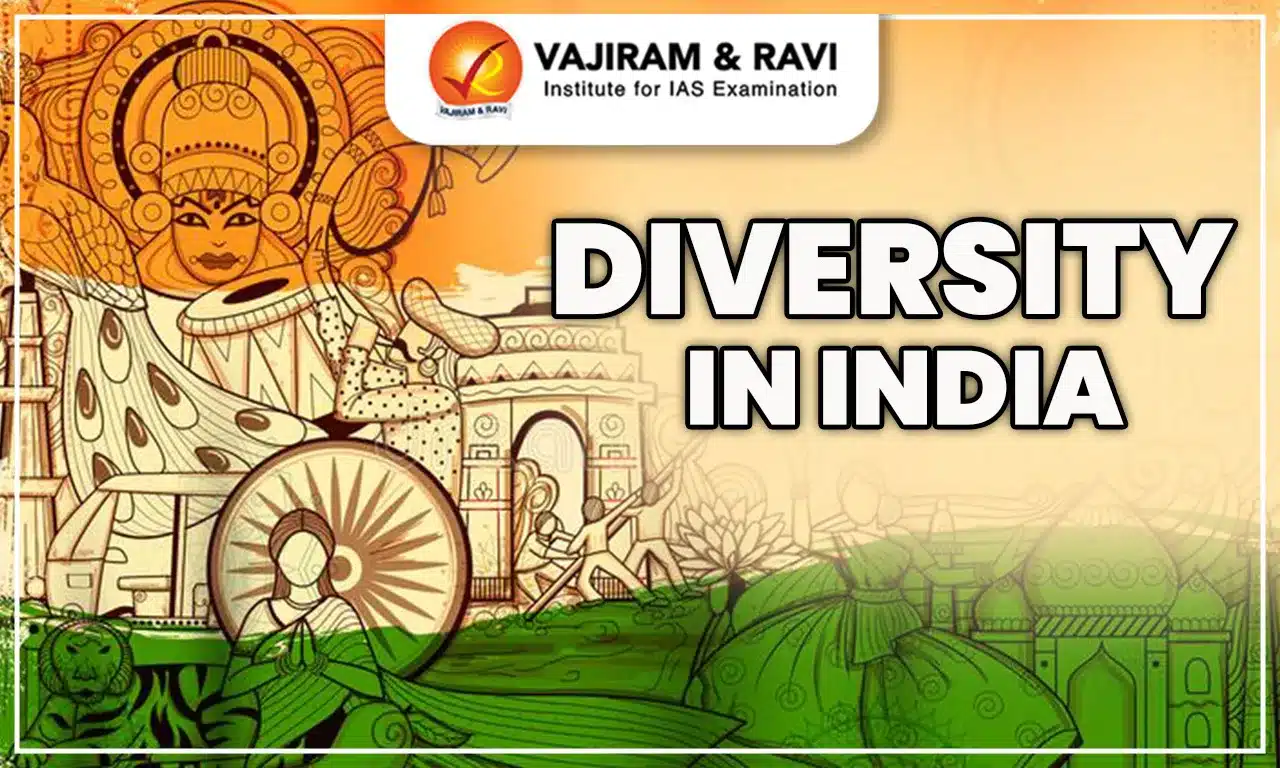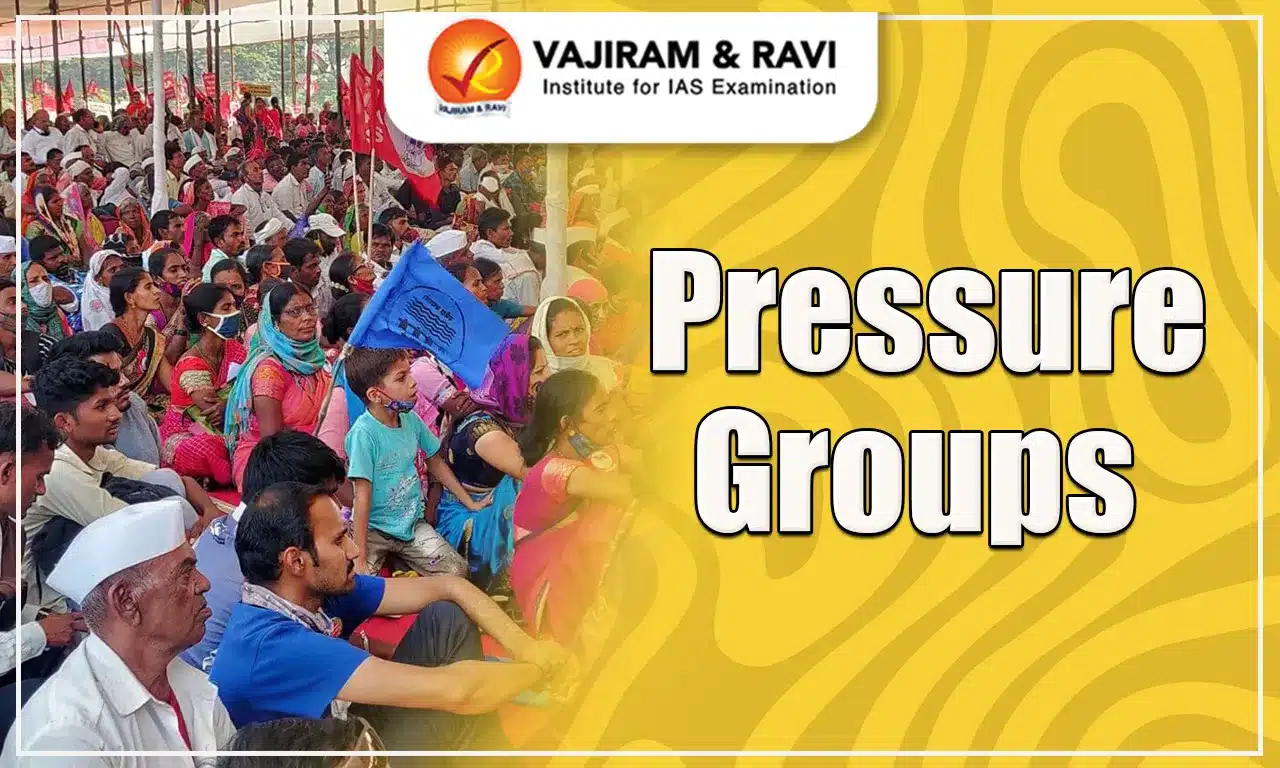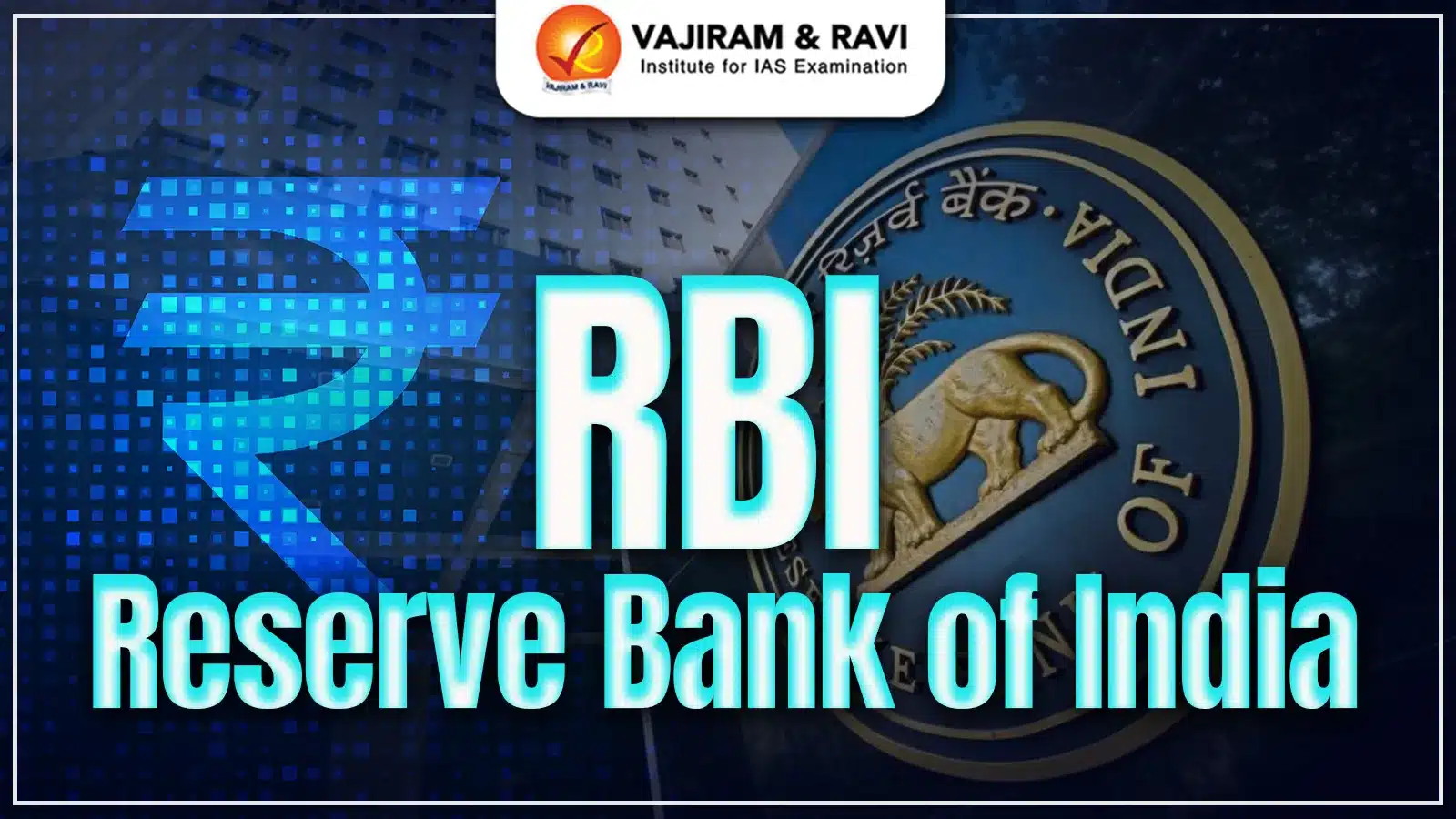What is Diversity?
From the perspective of society, diversity refers to the presence of a wide range of differences among people within a given community, organization, or group. These differences can include but are not limited to race, ethnicity, gender, sexual orientation, socioeconomic status, age, physical abilities, religious beliefs, political beliefs, and more.
What are the various manifestations of diversity in India?
India's diversity stems from historical influences, including waves of invasions, the emergence of religions, and Western colonialism. Geographically, the country's rugged terrain, river systems, coastline, and climate have also shaped distinct cultures, traditions, and languages across regions.
Geographical Diversity and Biodiversity:
India's geography is diverse, featuring towering mountain ranges such as the Himalayas and the Western Ghats, as well as vast plains like the Indo-Gangetic along with the Deccan Plateau.
- The country also boasts a variety of climates and ecosystems, from the wettest areas of the northeast to the arid deserts of the west.
- India is one of the world's 17 megadiverse countries, home to around 8% of all recorded species. India has over 45,000 plants and 91,000 animal species, and various ecosystems.
Religious Diversity:
India is characterized by diverse religious beliefs and practices.
- India is the birthplace of four of the world’s major religions, i.e. Hinduism, Buddhism, Jainism, and Sikhism.
- India is also home to people of many religions of the world, including a huge population of Muslims( 3rd largest in the world) and Christians, along with Jews, Parsis, etc.
Caste Diversity:
Caste plays a significant role in shaping the diverse fabric of Indian society. There are more than 3,000 Jatis in India. These are hierarchically graded in different ways in different regions.
- It may also be noted that the practice of the caste system is not confined to Hindus alone. Castes among Muslims, Christians, Sikhs, and other communities also exist in India.
Language Diversity:
More than 19,500 languages or dialects are spoken in India as mother tongue.
- 121 languages are spoken by 10,000 or more people in India.
- The languages spoken by the Indian population can be divided into four language families:
- Austric family- Santhal, Munda, Ho, etc.
- Dravidian family -Telugu, Tamil, Kannada, Malayalam, etc.
- Sino-Tibetan family- Sikkimese, Sikkimese, Bodo, etc.
- Indo-European family- Hindi, Punjabi, Sindhi, Marathi, etc.
Racial Diversity:
India is a country of great racial diversity, with a wide variety of different ethnic and linguistic groups.
- The population is primarily an admixture of the following races: Indo-Aryans, Dravidians, and Mongoloids.
- The country is also home to several tribal groups, each with distinct cultures and traditions.
Diversity in Social Life:
Indian society is greatly heterogeneous along various regions and sub-regions differing from one another. Diversity can be seen in -
- Family Structure, Marriage Types and Rituals
- Festivals, Cuisine and food habits, Clothing, settlement patterns
- Literature, Epics, Drama, Cinema, and Theatre.
What are the elements of unity in India?
Despite all the diversities, India remained united with a unitary spirit. The thread which binds all Indians together is known as "Unity among diversity". This unity can be seen across various spheres
Geographical unity
The Indian Subcontinent constitutes a distinctive geographic entity, and the Himalayas provide a formidable physical barrier to the North, while seas are across the East, South, and West.
- The geology of the Indian subcontinent is unique due to its location on a separate tectonic plate, the Indian Plate, which collided with the Eurasian Plate to create the Himalayan mountain range, resulting in distinctive geological features and land formations.
Historical unity
From the very beginning, the entire geographical part was known as Bharat Varsha, and this name is present in the Vedas and Puranas.
- Most of the geographical territory of India came under the rule of great emperors like Ashoka and Akbar.
- British rule and the subsequent Nationalistic Movement led to further territorial integration.
Cultural unity
Despite having different cultural groups, there is a lot of unity in terms of ideas, philosophy, literature, etc.
- Being the country of festivals, it is observed that people from all cultural backgrounds come together and celebrate all the festivals like Diwali, Holi, Eid, Christmas, Gurupurab, Durga Puja, Onam, Baisakhi, etc reflecting the cultural diversity and unity of India.
- The manner of performance of social ceremonies is usually the same in all parts of the country.
- Despite its vast cultural diversity, India shares a sense of unity in its customs, practices, and social life, such as respect for elders, hospitality, joint family systems, etc.
Religious unity
Religious unity is still evident as almost all major religions practiced in India provide a similar teaching of values of tolerance and solidarity.
- Despite the diversity, there is also a sense of unity and tolerance towards different religions, with people of different faiths living and working together in harmony.
- This unity is reflected in the country's secular constitution, and most people in India have historically lived in peace with their neighbours regardless of their religious beliefs.
What does India gain through its Unity and diversity?
- National Integration - Unity in diversity can inject the feeling of harmony and brotherhood, despite having cultural, regional, or social differences among them.
- Global recognition - A country that is highly diverse but remains united not only builds a strong platform of growth but also attains recognition at the global level. It becomes an example for the world to follow.
- Peaceful co-existence - The peaceful co-existence can only be maintained through unity in a diverse country.
- Economic growth: Diversity can bring economic advantages as well, as different regions of the country have their own strengths and resources, leading to a more diversified economy.
- Tolerance and social cohesion: India's diversity can promote greater tolerance and understanding among different groups, leading to a more cohesive society.
- Innovation: Diversity in perspective and background can lead to more creative thinking and spur innovation and progress. The diverse range of languages and cultures also enables more effective communication with different parts of the world.
What are the factors that threaten India’s diversity?
- Religious and ethnic conflicts: India has a history of religious and ethnic conflicts, which can lead to violence and loss of life. These conflicts can threaten the unity and diversity of the country.
- Discrimination and marginalization: Certain groups, such as Dalits and tribes, have faced discrimination and marginalization based on their caste and ethnicity. This can lead to social and economic disparities and threaten the diversity of the country.
- Forced assimilation and cultural homogenization: With the rise of globalization, there is a risk of cultural homogenization and the loss of traditional customs and practices. This can lead to the erosion of diversity in India.
- Political polarization: Political polarization in India based on religious, caste, and linguistic lines can also threaten diversity as it can fuel tension and conflicts between different groups.
- Climate change and environmental degradation: Climate change and environmental degradation can also threaten the diversity in India, as it can lead to the loss of biodiversity and the displacement of communities that rely on natural resources.
What are the existing mechanisms to promote Unity and diversity in India?
Constitutional mechanisms:
- Provisions for Geographical Unity: The spirit of the Constitution is that India is an "indestructible Union of the Destructible states”. Promoting ‘unity and integrity of the nation’ is one of the objectives stated in the preamble.
- Provisions for ethnic and Cultural Unity: Article 29 of the constitution mandates the state to protect the distinguished culture and traditions of various ethnic groups.
- Provision for religious Unity: The constitution of India defines it as a secular country. As per Article 25 of the constitution, the people are allowed to preach and propagate any religion. Further, under Article 15, the state is directed to ensure that there shall be no discrimination on the ground of religion with any person.
- Provision for unity in diverse languages: The constitution of India doesn't impose any single language as a national language. Schedule 8 of the constitution recognizes 22 languages of our country.
Policy mechanisms:
- ‘Ek Bharat, Shreshtha Bharat’- Programme aims to enhance interaction & promote mutual understanding between people of different states/UTs
- New Education Policy 2020- Has ‘3 Language formula’ in School Education.
- One Nation-One Ration Card- To promote inter-state mobility among the workforce.
- Establishment of bodies like National Integration Council, Inter-state Council.
How to strike a balance between unity and diversity in India?
To strike a balance between unity and diversity in India, it is essential to acknowledge and appreciate the differences among various groups while promoting a sense of togetherness, trust, and solidarity.
- It is crucial to refrain from attempting to assimilate or be assimilated into other cultures, but instead, show respect for the unique identities of each group.
- The process of balancing diversity with unity is an ongoing one, and it is essential to cultivate multiple identities.
- Regardless of one's racial, ethnic, linguistic, or religious identity, every citizen of India should prioritize their Indian identity.
- Ultimately, the key to achieving this balance is to recognize and embrace the differences while simultaneously promoting a sense of unity and common purpose.
Last updated on November, 2025
→ Check out the latest UPSC Syllabus 2026 here.
→ Join Vajiram & Ravi’s Interview Guidance Programme for expert help to crack your final UPSC stage.
→ UPSC Mains Result 2025 is now out.
→ UPSC Notification 2026 is scheduled to be released on January 14, 2026.
→ UPSC Calendar 2026 is released on 15th May, 2025.
→ The UPSC Vacancy 2025 were released 1129, out of which 979 were for UPSC CSE and remaining 150 are for UPSC IFoS.
→ UPSC Prelims 2026 will be conducted on 24th May, 2026 & UPSC Mains 2026 will be conducted on 21st August 2026.
→ The UPSC Selection Process is of 3 stages-Prelims, Mains and Interview.
→ UPSC Result 2024 is released with latest UPSC Marksheet 2024. Check Now!
→ UPSC Prelims Result 2025 is out now for the CSE held on 25 May 2025.
→ UPSC Toppers List 2024 is released now. Shakti Dubey is UPSC AIR 1 2024 Topper.
→ UPSC Prelims Question Paper 2025 and Unofficial Prelims Answer Key 2025 are available now.
→ UPSC Mains Question Paper 2025 is out for Essay, GS 1, 2, 3 & GS 4.
→ UPSC Mains Indian Language Question Paper 2025 is now out.
→ UPSC Mains Optional Question Paper 2025 is now out.
→ Also check Best IAS Coaching in Delhi
Diversity in India FAQs
Q1. What is meant by Melting pot and Salad bowl theory in the context of Society?+
Q2. What is meant by the phrase ‘vasudhaiva kutumbakam’?+
Tags: diversity in india quest

















